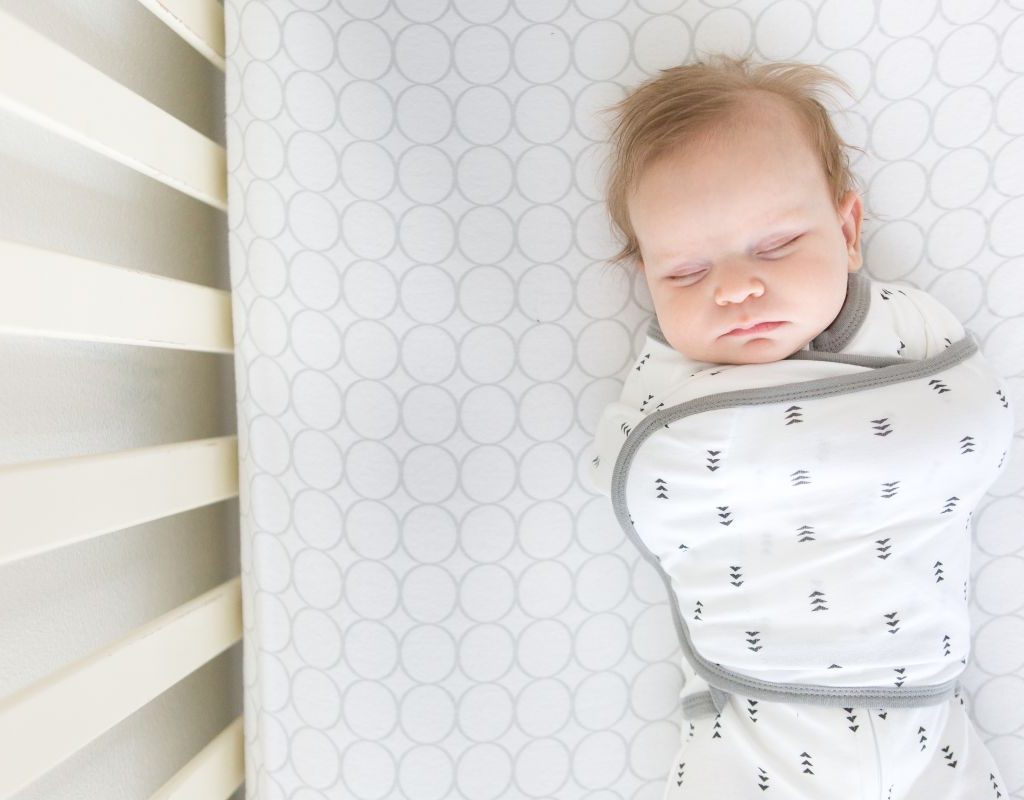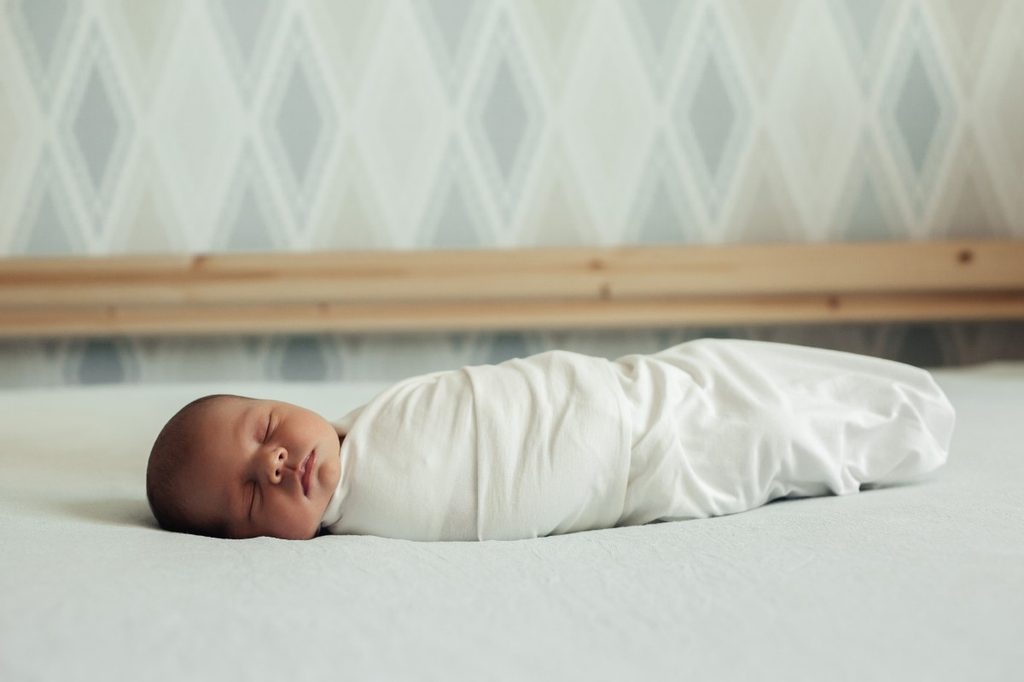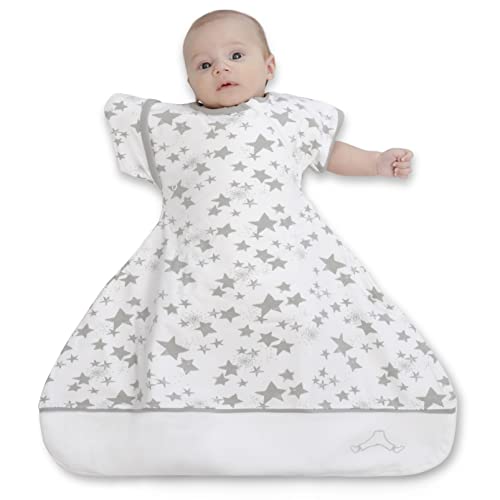
It’s no secret that babies love to be swaddled, but many parents often struggle with wrapping their babies so tightly. Although your baby may resemble a cute burrito, many wonder if swaddling is safe and what is the right way to swaddle a baby. These questions are quite understandable, as every new parent wants to ensure they’re handling their newborn as safely as possible. When it comes to swaddling the correct way, it’s best to turn to the experts. We have the information you’re looking for from trusted sources below.
Is swaddling safe?

Yes, swaddling a baby is safe, but only you do it correctly. First, whether a baby is swaddled or not, it’s important to follow the safe sleep guidelines by the American Academy of Pediatrics. Place your baby on their back to sleep, on a firm and flat surface, alone in a crib or bassinet, without toys, pillows, blankets, crib bumpers, or anything else. Within those guidelines, the AAP says:
“It is fine to swaddle your baby. However, make sure that the baby is always on his or her back when swaddled. The swaddle should not be too tight or make it hard for the baby to breathe or move his or her hips. When your baby looks like he or she is trying to roll over, you should stop swaddling.”
Swaddling is popular because it helps babies stay asleep by keeping their arms contained instead of flailing out. Young infants have something called the Moro reflex that can startle them awake, and swaddling helps with this. The tight and snug feeling also helps them feel hugged, like you’re holding them or they’re still in the womb. Since tucking them in with a loose blanket isn’t safe because it could move and suffocate them over their face during sleep, a swaddle is a safe alternative that keeps them warm but won’t move onto their face.
Some studies show an increased risk of Sudden Infant Death Syndrome and accidental suffocation when babies are swaddled and placed on their stomachs to sleep or if they roll onto their stomachs, says Rachel Moon, MD, FAAP, chair of the task force that authored the AAP’s safe sleep recommendations.
While staying asleep definitely sounds like a good thing and swaddling is endorsed as a safe practice by the AAP, you should also be aware that babies don’t wake up as easily with swaddling, a risk factor for SIDS. “Decreased arousal can be a problem and may be one of the main reasons that babies die of SIDS,” says Dr. Moon.
How to swaddle a baby safely

To swaddle safely, use a swaddle made of breathable material so your baby doesn’t overheat. Cotton or muslin are good choices. Always put your baby to sleep on their back in their swaddle.
You’ll also want to wrap your baby snugly but not too tightly. One of the easiest ways to figure out the wrapping is to buy a Velcro swaddle like this one. It’s pretty foolproof. These Velcro over the arms and chest but leave the hips and legs free inside the pouch, which is healthy for your baby’s hips and knees. “Hip-healthy swaddling” lets baby’s legs bend up and out to prevent hip dysplasia.
Another key to swaddling safely is to stop swaddling when your baby shows signs they are going to roll over independently or once they do it for the first time. If they can do this, it means they could roll onto their face and get stuck with their arms strapped in and not able to move. This can suffocate them with their face down in their crib. Swaddling is safe for newborns but not older babies who can move around. To transition out of a swaddle, use a wearable blanket like Baby Merlin’s Magic Sleepsuit. According to the AAP, many babies start working on rolling around at 2 months old.
It’s particularly important to emphasize that studies show an increased risk of SIDS or accidental suffocation when swaddled babies are placed on their stomachs to sleep or if they roll onto their stomachs, according to Dr. Moon. “If babies are swaddled, they should be placed only on their back and monitored so they don’t accidentally roll over,” she says.
When you shouldn’t swaddle

Swaddling can be a safe way to provide comfort to your newborn infant, but experts note that this method should really only be used until your baby reaches about 6-8 weeks old. Swaddling should be discontinued once they begin to move and try to flip over. “Actually, the goal should be to swaddle as little as possible,” said Ganga Srinivas, MD, MBBS, FAAP, Medical Director of the UH MacDonald Women’s Hospital Newborn Nursery.
“In particular, an awake baby should never be swaddled. Once fed, if they are awake and active, it is essential that they have free use of their arms, legs, and voice (no pacifier) to promote development.” Srinivas also notes there are other ways parents can soothe and calm a baby like rocking, cradling, and soft noises that can be helpful when swaddling is no longer an option.
Safe sleep for infants is a scary world to navigate when you have a precious new life to take care of, and swaddling or not is your choice alone, though there is no risk-free choice. Swaddling is generally considered safe as long as you place a baby on their back, you don’t let them overheat, and you stop as soon as they can roll on their own. With these guidelines in mind, hopefully, you’ll be in for some peaceful nights of rest.




